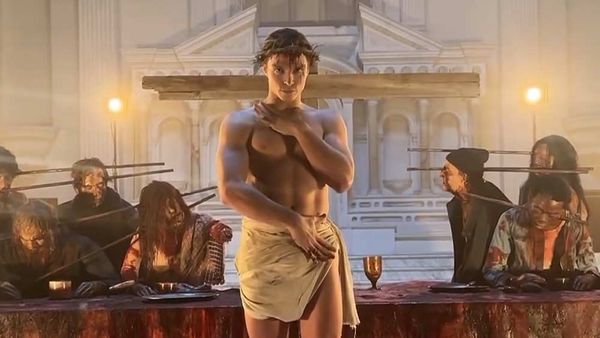
March 5, 2017
You Can Take It With You!
Sari Staver READ TIME: 4 MIN.
"Tomb Treasures: New Discoveries from China's Han Dynasty" is yet another tour de force from the Asian Art Museum. Like their previous installations, which consistently rank as the best in town, this one is staged like a theatrical production, with darkened galleries, dramatic lighting and knowledge-filled text, all designed to enhance a visitor's journey into the distant past.
Though not as flashy as some shows, it's magical viewing over 160 recently unearthed artworks and objects from one of the most advanced, powerful and wealthy ancient civilizations on earth - comparable to the Roman Empire - that have been buried underground and haven't seen the light of day for over 2,000 years. If you thought the Egyptians had a lock on elaborate preparations for the afterlife, you'd be mistaken. The Han stocked their tombs with the pleasures and accoutrements they enjoyed in life, including sex toys and toilets with a sophisticated, minimalist design a modern architect could admire.
Most of the artifacts were excavated as recently as 2011 from looted mausoleums at Dayun Mountain in Jiangsu province on the central coast of China. The complexes were vertically dug into the ground or into elevated platforms; ramps led down to sunken pits and a burial chamber, surrounded by huge storage compartments loaded with both sensual and utilitarian goodies for the underworld, and hermetically sealed by heavy doors. Courtesy of a digital touch screen, one can zero in on a location within the burial sites, and embark on a virtual tour.
Embedded in what the Han deemed essential to accompany them in death are clues to their lives, the lives of royals and nobility that is, though two simple, forlorn-looking earthenware sculptures of an armless man and woman (188-141 BCE), perhaps symbolizing servants accompanying the king, have a poignancy that resonates through the centuries. A primitive yet graceful dancer, likely modeled on a performer providing entertainment for the royals, has elongated arms and flared sleeves that convey undulating movement. Other pieces suggest a higher level of craftsmanship, such as a bronze lamp in the shape of a stag whose head is tipped back, balancing the base of the candle-holder on the tip of its nose like a juggler; a matching pair of striped bronze tigers inlaid with gold and silver, their backs arched, front paws extended; or the elegant bronze candelabra whose multiple swirling arms converge like the tributaries of a river, anchored on a stand in the shape of a horned toad, a mythical creature associated with the moon.
Quite a few objects relate to war: A set of spearheads, a crossbow trigger mechanism, and an imposing wood sculpture of a cavalryman from the Guangling kingdom, 1st century BCE. Exhibited in profile, the soldier is mounted on a robust equine with a braided tail, finely detailed hooves, and an alert, muscular body poised for battle. The figure was among 126 wooden warriors and attendants once lined up in procession formation inside a tomb.
The Han invested generous resources in custom-made regalia to protect the corpse and soul in the underworld, such as the strange and spectacular jade burial suit here. Suits of this kind could be constructed with as many as 2,500 individual pieces of jade cut in rectangular, triangular, round and half-moon shapes, and stitched together with gold, silver or bronze threads. Laid out serenely on a table, the head-to-toe body armor, which covered the feet like an upscale version of Doctor Dentons pajamas, resembles a cross between Frankenstein and a space traveler from a 1950s sci-fi TV serial. A favorite target of grave robbers, only a handful of intact suits survive.
Han royals like Jiangdu King Liu Fei subscribed to the importance of eternal pleasure and the idea that no one, dead or alive, should be without a portable phallus. The polished finish on a rather substantial, seven-and-a-half-inch-tall bronze baby appears to have gotten quite a workout before being entombed; a smaller one has a handle for ease of use. Their interest in sex toys and other Daoist bedchamber arts rivaled an obsession with personal hygiene, evidenced by the presence of numerous basins. They bathed regularly, liberally exfoliated, burned perfumed incense and indulged in massage. Baths and toilets occupied separate rooms, even after death. According to the exhibition text, the first reference to a toilet in China's historical record is a bizarre incident that occurred in 580 BCE when the Marquis of Jin drowned in one after tripping and landing head-first in a large latrine pit. Necessity being the mother of invention, the royals upgraded to a pedestal style they subsequently installed in their palaces and tombs.
Bringing up the rear, so to speak, and the star of the show is a prototype model on view here. Made of stone with a pair of raised parallel strips on the floor on either side of a hole in the center, it has armrests and a backrest for added comfort - everything but a magazine rack for the latest issue of The New Yorker. It'll be a while, dear.
Through May 28. Info: asianart.org







